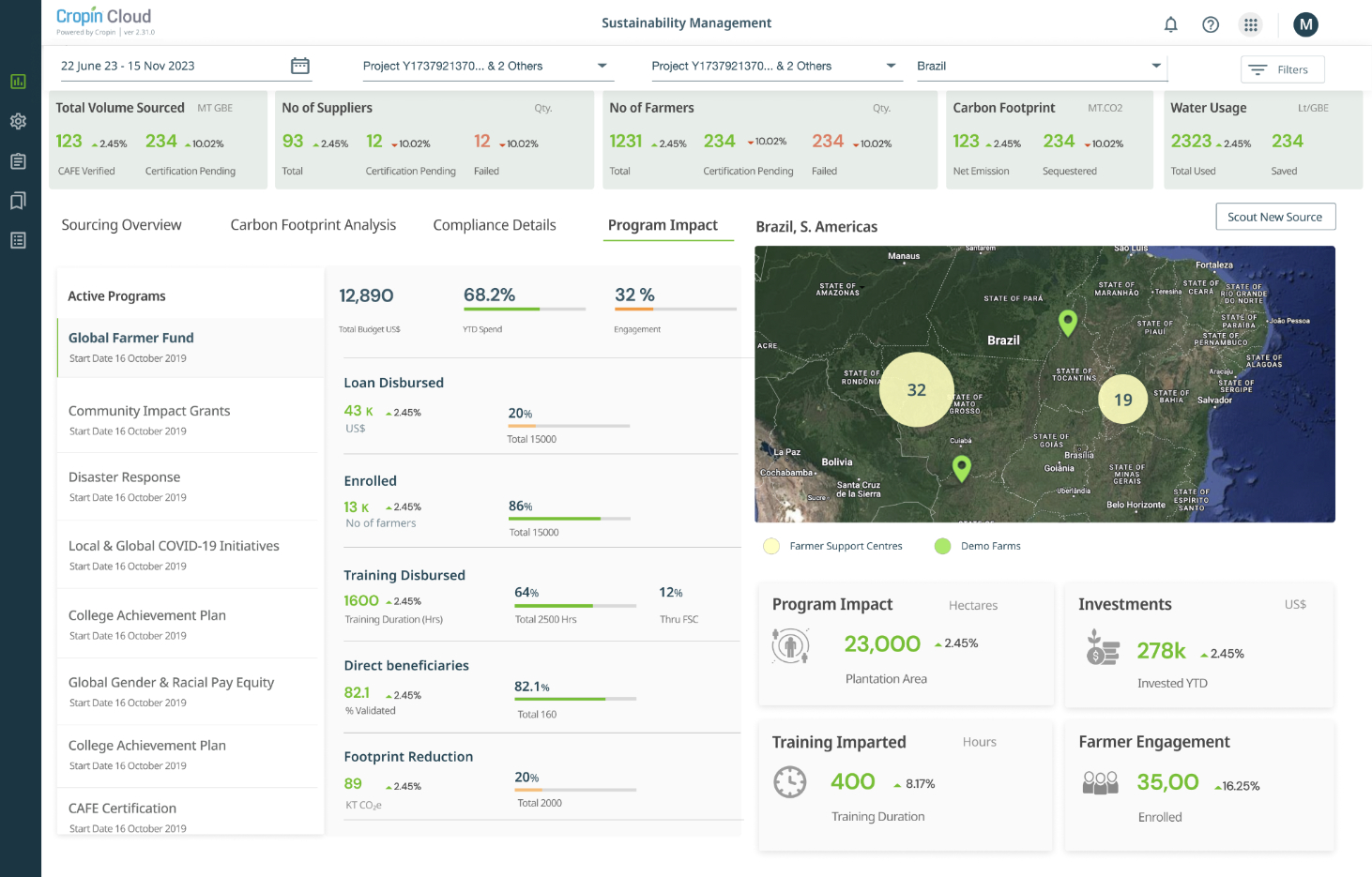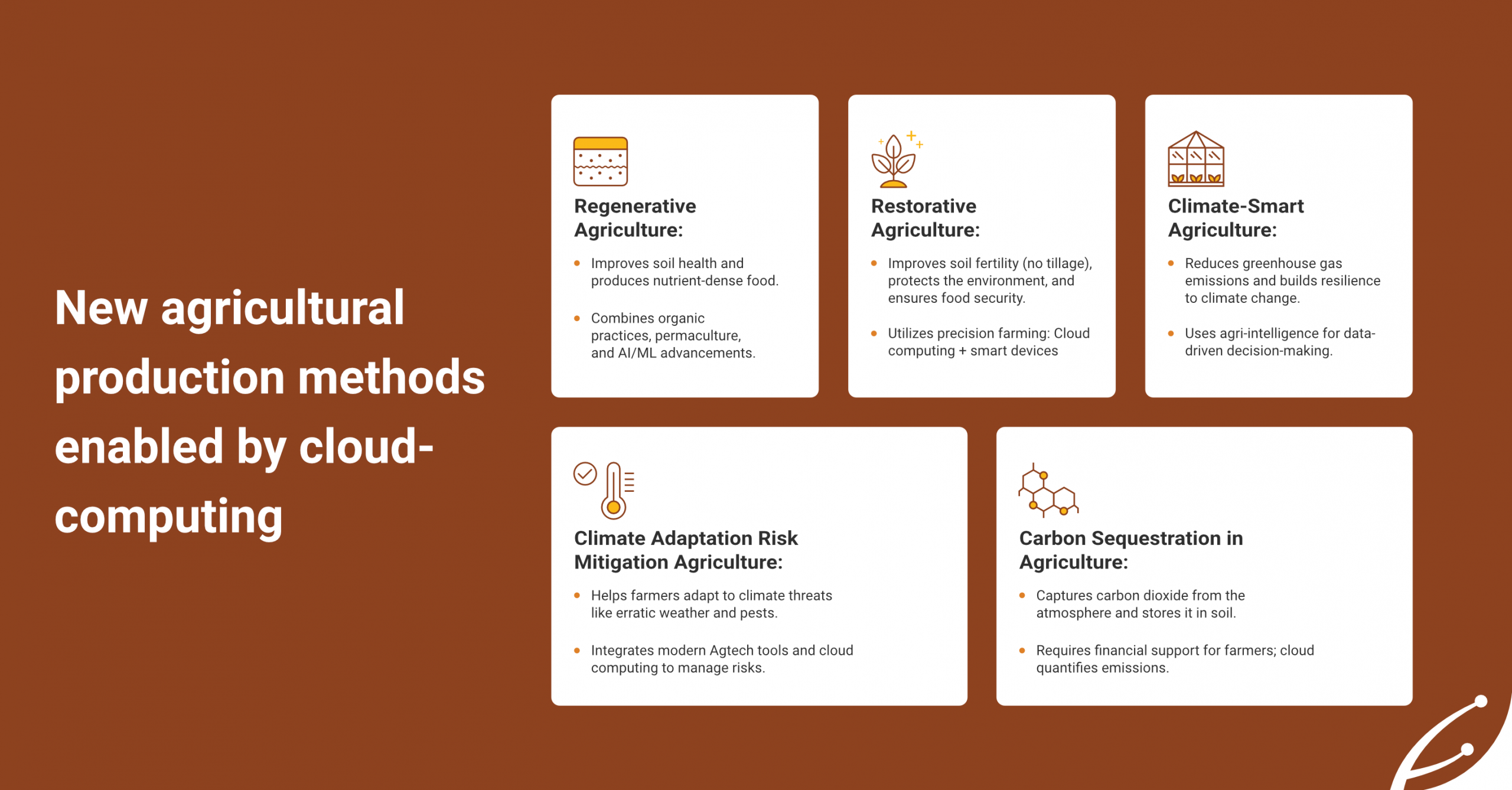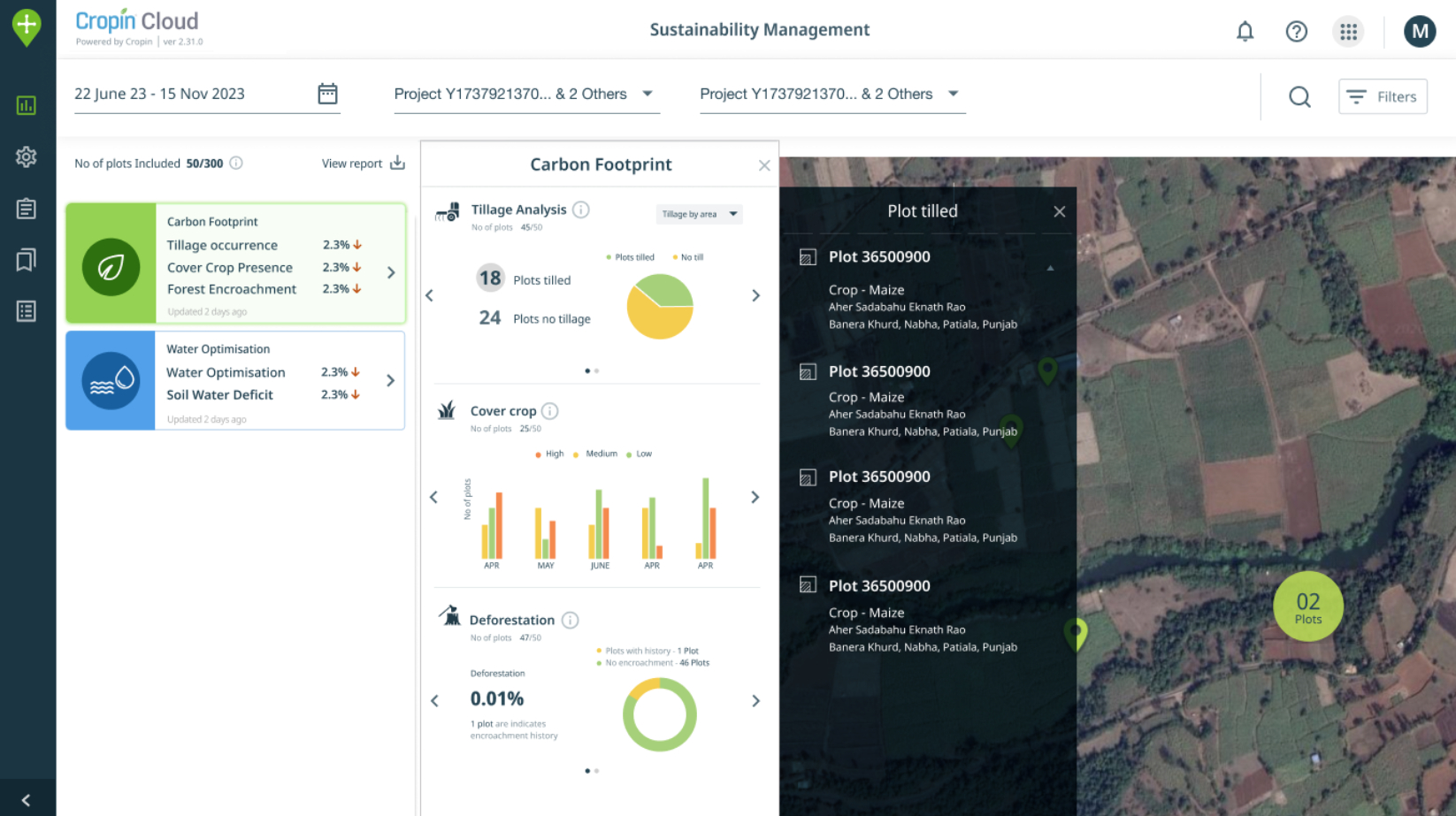- 1 Many Challenges, One Solution: Sustainable Agricultural Fueled by the Power of Technology
- 2 Change Management for Sustainable Agriculture
- 3 First Step in Change Management: A Transformation Empowering the Roots of Agri-Ecosystem
- 4 Change Management Techniques: Leveraging Platforms to Ease Adoption of Digital Agriculture
- 5 Change Management Strategies- Rethinking the Business Model
- 6 Technology as a Change Agent: Empowering Productive Sustainable Agriculture
- 7 AI and data-driven program optimization
- 8 Orchestrating Change
Many Challenges, One Solution: Sustainable Agricultural Fueled by the Power of Technology
- 1 Many Challenges, One Solution: Sustainable Agricultural Fueled by the Power of Technology
- 2 Change Management for Sustainable Agriculture
- 3 First Step in Change Management: A Transformation Empowering the Roots of Agri-Ecosystem
- 4 Change Management Techniques: Leveraging Platforms to Ease Adoption of Digital Agriculture
- 5 Change Management Strategies- Rethinking the Business Model
- 6 Technology as a Change Agent: Empowering Productive Sustainable Agriculture
- 7 AI and data-driven program optimization
- 8 Orchestrating Change
Synopsis: Achieving sustainable agriculture requires a significant change from traditional methods. Here, we discuss the change management roadmap, which covers – driving transformation at the grassroots level, leveraging tools and platforms for digital agriculture adoption, rethinking the business model, and revamping communication practices. Solutions like Cropin Cloud provide user-friendly interfaces and collect data to inform decision-making. Additionally, communication channels must be improved to facilitate real-time information exchange between all stakeholders. By prioritizing these aspects of change management, the agricultural sector can transition to more sustainable practices.
As the world population is projected to reach 9.8 billion in 2050 and climate change threatens food security, achieving UN SDGs and ending hunger by 2030 appears daunting. The mid-20th-century Green Revolution boosted cereal yields but also led to adverse environmental effects. It held back the ‘real green revolution’ movement, and investment in agriculture dropped off, as it was not considered profitable.
Addressing these challenges demands a renewed focus on sustainable agricultural practices to mitigate climate change and minimize the impact of agriculture on freshwater resources, land use, and greenhouse gas emissions. Simultaneously, it is crucial to make agriculture profitable for the future. The challenge is greater, as highlighted by a McKinsey report that warns of a potential food crisis surpassing past experiences like the 2007–08 global food crisis.
To overcome these challenges, agriculture must harness the best of scientific knowledge and technology to drive change management and transition to systems that provide –
- Transparency and visibility across crop value chains
- Predictable yield
- Mitigate climate change and drive resilience to it
- Provide intelligence to manage the efficient use of agri-inputs
- Enhance productivity
- Decrease greenhouse gas emissions
Change Management for Sustainable Agriculture
Embracing sustainability is no simple task. The first step to making agriculture sustainable is to make the cultivable land traceable, giving us the potential to transform how we grow food. However, considering the sheer scale of agriculture and the number of unpredictable factors that farming must deal with, this transition cannot be achieved by mere human intervention.
Without digitization, reimagining traditional business models for a more sustainable and productive future in agriculture is impossible. This transformation empowers all stakeholders to increase the per-acre value of cultivation by seamlessly implementing tools and platforms.

First Step in Change Management: A Transformation Empowering the Roots of Agri-Ecosystem
Agriculture remains a primary source of employment and sustenance for a significant percentage of the population worldwide. So, our approach to transformation must prioritize empowering grassroots stakeholders with accessible technology solutions. Key considerations include:
- Prioritize accessibility and user experience: The digital transformation must be driven through tools and platforms that are easy to learn and use, even for those with limited tech experience. The diverse demographics of stakeholders in agri-ecosystems necessitate simple-to-use interfaces available in multiple languages. They should be mobile-compatible as the first touchpoint—the farmers and field officers work on the field.
- Training and capacity building: Empowerment goes hand in hand with education. We must make these tools accessible and conduct relevant training programs to equip farmers, field staff, and agronomists with the skills and knowledge to harness technology effectively. This will help them maximize the potential impact.
- Data security and transparency: The data collated should be secure and accessible to enable informed decision-making. Enterprises must uphold transparent data-sharing practices to build trust within the agricultural community.
Change Management Techniques: Leveraging Platforms to Ease Adoption of Digital Agriculture
Deploying an intelligent Agtech platform is essential to achieving the vision of sustainable agriculture. However, for an agribusiness to effectively adopt technology, it first requires a comprehensive platform that connects multiple stakeholders, from farmers to top management. The platform should provide seamless collaboration and information sharing across the agricultural ecosystem.
Once the platform is in place, the next step is to embrace technologies such as remote sensing-powered AI/ML solutions. These solutions provide invaluable insights into various aspects of field management. By harnessing this intelligence, agribusinesses can gain actionable insights into crop health, water management, pest control, and weather patterns.
Cloud-based platforms with integrated remote sensing-powered AI/ML solutions are crucial in this process. They empower enterprises and farmers with granular, data-driven intelligence, enabling targeted interventions and optimizing resource utilization for a sustainable future.
Change Management Strategies- Rethinking the Business Model
With grassroots empowerment and leveraging data-driven intelligence underway, the focus must now be on reimagining business models to align with digital transformation efforts. Enterprises must embrace a paradigm shift in management processes, leveraging data analytics and remote sensing technologies to monitor field operations and optimize resource allocation. This holistic approach enhances profitability and minimizes environmental impact, fostering a harmonious balance between economic viability and ecological sustainability.
Revamping Communication Practices
We must recognize the need for a shift in communication and enable democratizing access to data and intelligence across stakeholders within the agriculture value chain. This is critical to enable data-driven decisions at the grassroots level. Moreover, farmers must be able to promptly relay any field observations, be these minor deviations or disease outbreaks, to agronomists. This real-time communication ensures timely resolution of issues, safeguarding productivity and sustainability in agricultural practices.
Scaling Change and Innovation
A strong partnership between the business and technology teams is an important aspect of adopting technology. They should collaborate closely and partner with technology providers to ensure that the core objectives are clearly established, change management processes have been defined and owned top-down within the organization, and constant training and enablement are made available to stakeholders involved in this technology-enabled change and innovation process. The true success of change management will lie in grass-roots driving innovation with the adoption of technology.
Technology as a Change Agent: Empowering Productive Sustainable Agriculture
Transforming conventional farming into modern, sustainable agriculture hinges on adopting advanced technologies that facilitate transparency and efficiency. As the agricultural sector grapples with sustainability challenges, platforms like the Cropin Cloud, which aims to make every plot on the planet traceable, play a crucial role in driving, monitoring, measuring, and reporting sustainability metrics. This, in turn, improves the productivity of every farm. Let us now deep-dive into how Cropin enables sustainable agriculture.
Ease of adoption and User-Friendly Interface
Farmers and agribusinesses must transition from conventional farming methods to modern agriculture. Deploying technology is key to facilitating precise and transparent operations in the agricultural sector. The Cropin platform stands out as a user-friendly interface, particularly favored by stakeholders at the grassroots level for its ease of use and adoption.
Digitalization using the scalable, cost-efficient, and secure Cropin Cloud platform helps monitor, measure, and analyze individual farmers’, crops’, and fields’ unique needs. It provides hyper-local knowledge while paving the way to standardization at a global level for efficient agricultural management.

Reliable Farm Data Management
Farming companies need an integrated cloud platform to collect reliable data that they can use to gain insights for meaningful and measurable climate change mitigation and adaptation measures. Remote sensing equipment like satellites and drones can record accurate agricultural, weather, and environmental inputs. Sensors, drones, and mobile phone applications can track and monitor farming activities and generate continuous, accurate, reliable, direct data.
Through its Data Hub, the Cropin Cloud platform integrates data from multiple sources to create reports that give in-depth insights into crop growth and harvests. Cropin utilizes near real-time data to derive intelligence that can alert farmers about crises like pest and weed infestation beforehand and enable quick resolution.
Market ecosystem enablement
An integrated agriculture cloud platform can enable the market ecosystem to go a long way in ensuring the economic security of farmers. Agricultural cloud platforms like Cropin Cloud can help connect farmers with buyers (market yard, retail chain, food processors, exporters, etc.) and suppliers (providers of fertilizers, pesticides, equipment, etc.), update them on market prices, help drive their financial inclusion, and more. Access to cloud computing, data mining, and real-time information shared about markets enable farmers, farming companies, and commodity traders to make intelligent sell/purchase decisions.
Rational reporting frameworks
Agricultural operations impact Earth’s ecosystems, and agricultural sustainability is a growing global concern. Agriculture significantly contributes to greenhouse gas emissions, generating 19%-29% of total GHG emissions. It also accounts for deforestation and the use of land, water, and other natural resources. Simultaneously agriculture also has a significant role in reducing climate change, biodiversity loss, and food insecurity.
Adopting climate-smart agriculture (CSA) practices like no-tillage, precision farming, intelligent land use, etc., will reduce agricultural emissions and help mitigate climate change. Monitoring standards and adopting legislation and regulations can ensure that the farming community practices sustainable agriculture. Digitizing farming practices on the Cropin platform enables constant digital monitoring and provides verifiable metrics for sustainability reporting.

AI and data-driven program optimization
Right from crop and seed selection to choosing the right time for harvesting, optimizing agri-input resources, and adopting the best farming practices, technology can be deployed.
Cropin Cloud, an intelligent agriculture cloud, integrates real-time data from remote sensors like satellites, drones and in-field devices like soil sensors to generate AI/ML-driven intelligence. These models generate advisories and alerts to optimize agri-input usage and efficiently mitigate risks. It results in higher yield and quality, while production costs and workloads are reduced by analyzing data and improving forecasting.
Through machine learning algorithms, AI can extract meaningful value from complex big data generated by modern farming operations. Plant breeding, risk analysis, agricultural machinery and logistics management, and market information are key fields that benefit from AI applications.
Cropin Cloud, a multi-tenant intelligent agriculture cloud platform, provides access to 22 field-tested machine learning models. The Cropin AI Labs continues to develop many more agriculture problem statement-specific models for customers.

Orchestrating Change
In conclusion, agriculture, a prerequisite for human existence, must embrace sustainable practices that are in harmony with nature and not against it. Agricultural sustainability, which works on the ethos that we should cater to the needs of the present without compromising the prospects of future generations to meet their own needs, requires change management.
In orchestrating this transformation, enterprises must act swiftly and decisively to secure the future of food production, acknowledging the growing global demand for sustainable agriculture. Enterprises become climate combatants by embracing innovative solutions and committing to sustainable growth. They must leverage intelligent cloud platforms to maximize per-acre yield, minimize environmental impact, and optimize operating costs.
